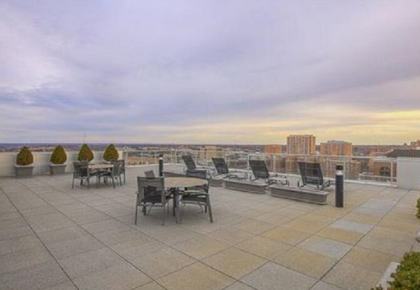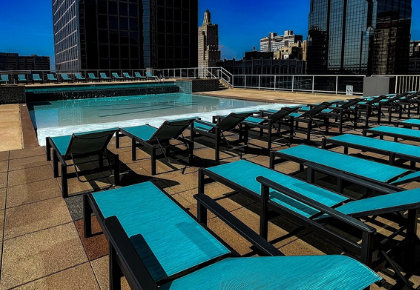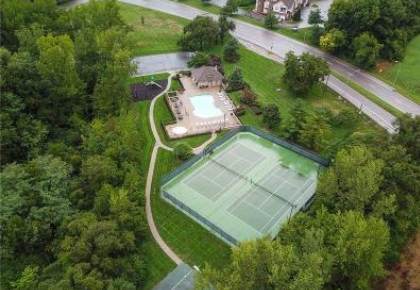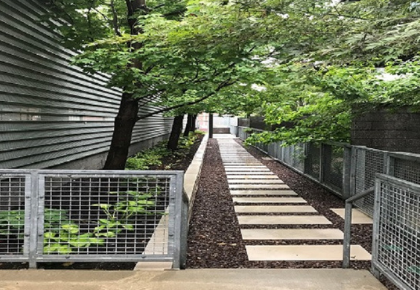The Importance of HOA Amenities for Your Community
 HOA amenities continue to rank among one of the most important considerations for prospective buyers at both active adult and multi-generational lifestyle communities across the country. While the pandemic has caused many to re-evaluate and re-prioritize what type of HOA amenities are most important, they are still highly influential in motivating a homebuyer's decision about where they ultimately choose to live. Communities that fail to meet buyer expectations or that fail to plan amenities around consumer interests can be negatively impacted in terms of sales, referrals, profitability, and reputation of their brand. Homeowner associations, tasked with planning for new amenities and implementation of supporting programming, will influence these essential variables.
HOA amenities continue to rank among one of the most important considerations for prospective buyers at both active adult and multi-generational lifestyle communities across the country. While the pandemic has caused many to re-evaluate and re-prioritize what type of HOA amenities are most important, they are still highly influential in motivating a homebuyer's decision about where they ultimately choose to live. Communities that fail to meet buyer expectations or that fail to plan amenities around consumer interests can be negatively impacted in terms of sales, referrals, profitability, and reputation of their brand. Homeowner associations, tasked with planning for new amenities and implementation of supporting programming, will influence these essential variables.
The specific types and levels of amenities available in a community will vary from one property to the next. Overall community size, the planned scope of the infrastructure, and available resources for funding typically have the most significant impact. New or emerging trends in programming, interests unique to a specific geographic region and natural features of the land can also influence amenity planning and design. Although the developer or builder of a new community will usually drive amenity planning efforts early on, responsibility for updating or adding new amenities as a community grows and evolves will eventually fall to the HOA. Information on trends and buyer interests that should be considered in planning for amenity additions or renovations can be derived from various sources.

Larger-scale communities may plan dedicated amenity space for a broad base of program functions. At the same time, smaller properties are likely to rely on multi-use spaces that can be used for a variety of activities. Whether the community is planned for active adults or homeowners of all ages also influences the overall community and amenity design. So what amenities are now considered most important? Let's take a look.
The trends in HOA Amenities Shaping Active Adult Communities in 2022
One thing the pandemic did was cause residents to re-evaluate which HOA amenities are most important, as many ended up being closed for the duration of the pandemic. This was especially true for active adult communities. Outdoor living spaces became much more critical as residents wanted to socialize but wanted to do so in a safer environment. But it's not just outdoor lounges and dining spaces that gained popularity.
Outdoor spaces that allow residents to remain active ended up at the top of the wish list. Dedicated areas for various fitness classes, pickleball courts and pools have increased in popularity so residents can make the most of the summer weather. Biking/hiking trails that can be used year-round to allow residents to remain active and socialize with neighbors through walking groups have also gained traction in several communities.

As indoor amenities begin to reopen, they will continue to be an essential part of the community to promote social interaction. Meeting rooms, art studios or craft rooms, movie or performance theatres and wireless internet cafes are great value-added amenities. However, it will be beneficial to continue providing virtual programs for residents that feel more comfortable in their own spaces. Virtual fitness classes or book clubs can allow residents to feel included in the community if they are not ready to join in-person events.
What About HOA Amenities Trends for Multi-Generational and Family Communities?
Across multi-generational lifestyle communities, buyers may be looking for many of the same amenities included at active adult properties today. The community, however, must naturally include offerings that appeal to children, teens, families, and adults of all ages.
Larger-scale communities might offer indoor amenities such as performance theaters or auditoriums, gymnasiums, on-site food and beverage venues, demonstration kitchens or childcare facilities. What became more apparent during the pandemic, with many transitioning to working remotely, was having a space available away from the rest of the family where they could participate in important work events or meetings. Conference rooms or private single-use areas that can be reserved that feature multimedia capabilities create a flexible and comfortable setting for people who need a quiet place to work from time to time.
Outdoors, bike trails and walking and jogging paths, community parks with outdoor picnic areas or concert pavilions, barbeque areas, children's playgrounds, sports courts and ball fields are also typically on the menu of amenity offerings at these communities. Many families grew over the pandemic with the addition of a puppy, and with a new family member comes unique needs. A dedicated space for all the community's four-legged friends to run around safely has gained importance. Pet washing stations or rooms have also become something pet owners seek out when looking for a community to call their own.

HOA amenities trends and offerings vary by region
Although many of the trends and interests in HOA amenities and programs we see across various lifestyle communities seem to be universal, others may be unique to a specific community or geographic region. Regardless of the community location, when planning for new amenities or programs, it's important to understand the interests and opportunities that may differentiate your consumers or the property itself. For example, communities with interior lakes or other waterfront areas may naturally attract homebuyers who enjoy their aesthetic appeal or seek waterfront activities. Leverage those opportunities by incorporating swimming beaches, canoe and kayak facilities and fishing venues, and supporting programming.
Strategies That Can Help a Community Deliver Five-Star HOA Amenities
Offer amenities that make the lives of residents easier and more enjoyable. Consider how they enhance property values, promote quality of life and nurture safe social interaction between homeowners.
-
Ensure amenities are planned to meet the unique needs and interests of your current homeowners and potential buyers.
-
Use amenities to help showcase the community's lifestyle. Locate them in visible areas and design them to make a strong marketing impact.
-
Leverage natural features such as lakes, parks, woodlands or other dramatic views in the design of the community and its functional outdoor amenity components. Preserve open space for aesthetic enjoyment and play where you can!
-
Ensure amenities are right-sized and economically feasible for the community. Needs and interests must be balanced with the overall return on capital investment.
-
Understand the concept, strategy, and importance of adequately funding for reserves. Position your community to have access to funding for future repair and replacement of amenity assets to minimize adverse impact on your homeowners.
-
Remember that amenities are not just about what's available internally to a community. Don't forget about lifestyle offerings that may be available close by. Easy access to museums, theatres, restaurants, sports complexes, walking trails and shopping venues, for example, can all have a favorable impact on the resident experience. They can also help motivate interest in your community among prospective homebuyers.
The right amenities can make all the difference in keeping your community marketable in a competitive environment, as well as keeping your current residents happy. A quality property management company can be an invaluable partner in helping your community identify and plan for needed upgrades and implement the supporting programming that nurtures relationships and enhances the quality of life for your homeowners. For more information, contact FirstService Residential, North America's leading property management company.